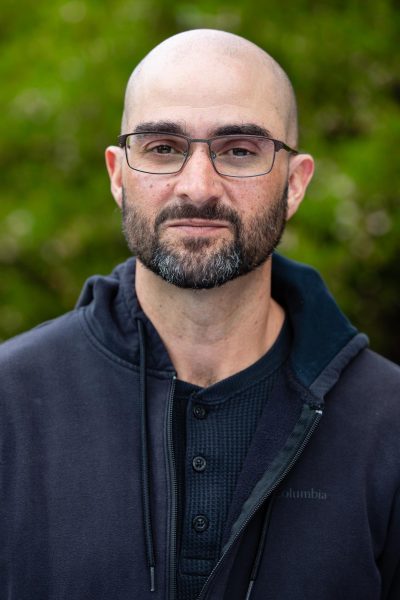How do you drink tea from an empty cup? If you’re one of the 15 million people who have read James Clavell’s epic 1975 historical novel “Shogun,” perhaps you remember this crucial lesson that John Blackthorne, the novel’s main character, had to learn to survive in the fascinating, yet foreign world of 17th century feudal Japan.
Astonishingly, Clavell’s characters are based on real people, as are the larger-than-life events portrayed in his 1,100-page sweeping masterpiece. From Blackthorne’s real-life counterpart (William Adams), to the master manipulator Toranaga (Tokugawa Ieyasu), and his final showdown at the battle of Sekigahara (Oct. 20, 1600). And perhaps the most important character, the beguilingly beautiful Mariko(Hosokawa Gracia), whose bravery in the face of danger and adeptness at dealing with adversity, epitomizes the hardy and resilient Japanese spirit in the “Land of Tears”.
Though the novel has already been made into a critically successful miniseries back in 1980 starring Richard Chamberlain, the FX Network channel has recently embarked on its own re-imagining of the famous story.
The first episode aired on Feb. 27, starring Cosmo Jarvis (maybe his parents were big Seinfeld fans) as Blackthorne, and Hiroyuki Sanada as Toranaga, and with Anna Sawaias Mariko.
The new series has received critical acclaim across the board with a ‘Rotten Tomatoes’ score of 99% and as a huge fan of the novel, I’m excited to see this series remade with all the capabilities that modern technology brings to the table, versus the 1980 miniseries. I’m also curious to see how faithful they are to the original source material of Clavell’s novel.
Clavell’s novel was incredibly and specifically detailed, it was essentially an encyclopedia on Japanese and Asian culture. This is important because 17th-century Japan was a highly ritualized and ordered society. With a strict hierarchy at every level of society, it was the time of “Bushido”, where honor and respect were just as important as food and water, maybe more so. This is the stylized world that Clavell immersed his readers in and FX is attempting to recreate.
FX’s first episode titled “Anjin” opens up with the “Erasmus” (the Dutch ship that Blackthorne is the pilot of) floundering in the doldrums of the open ocean. We learn that Erasmus and her handful of survivors are the only ones left of five ships and a crew of several hundred searching for the famous and very profitable Japan, which at that time was only open to Portuguese traders and their Spanish Allies. With all the survivors incapacitated and near death, the Erasmus drifts into the bay of a small Japanese fishing village “Ajiro” (Anjiro in the novel and part of modern-day Atami) and the first step of a world-changing journey begins.
In the first episode, FX did an excellent job of recreating the mood and setting of Clavell’s novel.
Starting with the dank and dilapidated interior of an era-appropriate Dutch merchant ship on its last legs, to the initial setting of the intimate fishing village of “Ajiro”, and finally on to the magnificent 17th-century Japanese capital “Osaka” (still Osaka). FX’s costume and scenery department went all out from the excellently rendered Samurai costumes to the obvious difference in the more muted style and lower quality of the outfits worn by the villagers of “Ajiro”.
Eventually, viewers are introduced to Toranaga and his nemesis Ishido (Ishida Mitsunari), along with the “Council of Elders” as well as several other ennobled samurai and their respective retainers. Here viewers get a sense of the wide array of colors and subtle style differences that the different samurai clans wore to represent their authority, territory, and some insight into their life philosophy (for example Toranaga has three cherry blossoms as his emblem).
To round out what was a superb first episode the acting across the board was tremendous. Sanada is perhaps known to American viewers from recent movies like “Mortal Kombat” (2021), or “Bullet Train” (2022) and is the acting heavyweight of the FX’s new hit series. However, Jarvis and Sawaihold their own next to Sanada. Even characters with smaller roles like the village headman Muraji (Yasunari Takeshima), and Fuji (Moeka Hoshi) stood out with their outstanding acting. Making you feel Muraji’s fear of the village’s head samurai Omi (Hiroto Kanai), and Fuji’s inner turmoil between her duty to her lord versus her family.
While this was a highly entertaining debut episode, I strongly recommend to absolutely everybody of appropriate age, for huge fans of Clavell’s novel to watch as this was quite a departure from the source material. From the opening scene on the “Erasmus” to the pit the captured Dutch sailors were shoved in, and the heart-wrenching scene where Fuji is forced to to make a horrendous decision, the script was obviously rewritten to not only fit a truncated time frame, but to provide the proper visual context without the benefit of written exposition. Despite this alternative, yet parallel story path, I’m eager to see how all the show’s characters are eventually rounded out and how this truly epic, real-life story is told.
So how do you learn to drink tea from an empty cup? For Blackthorne, in a strange land whose customs and power dynamics were utterly foreign, this lesson saved his life and equally as important his sanity. For each and every one of us the key to learning how to drink tea from an empty cup requires our own individual journey, however, the first step as Blackthorne and the 15 million readers of Clavell’s novel learned, is one must first accept that the cup is empty.


